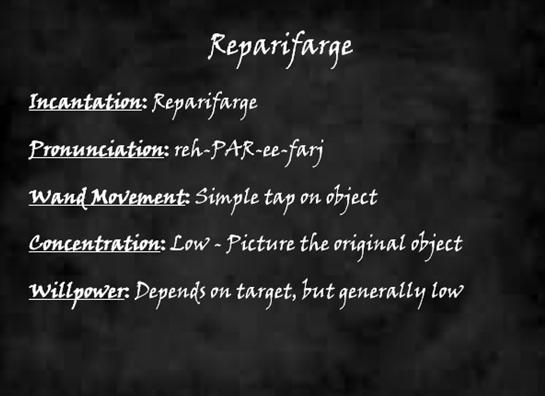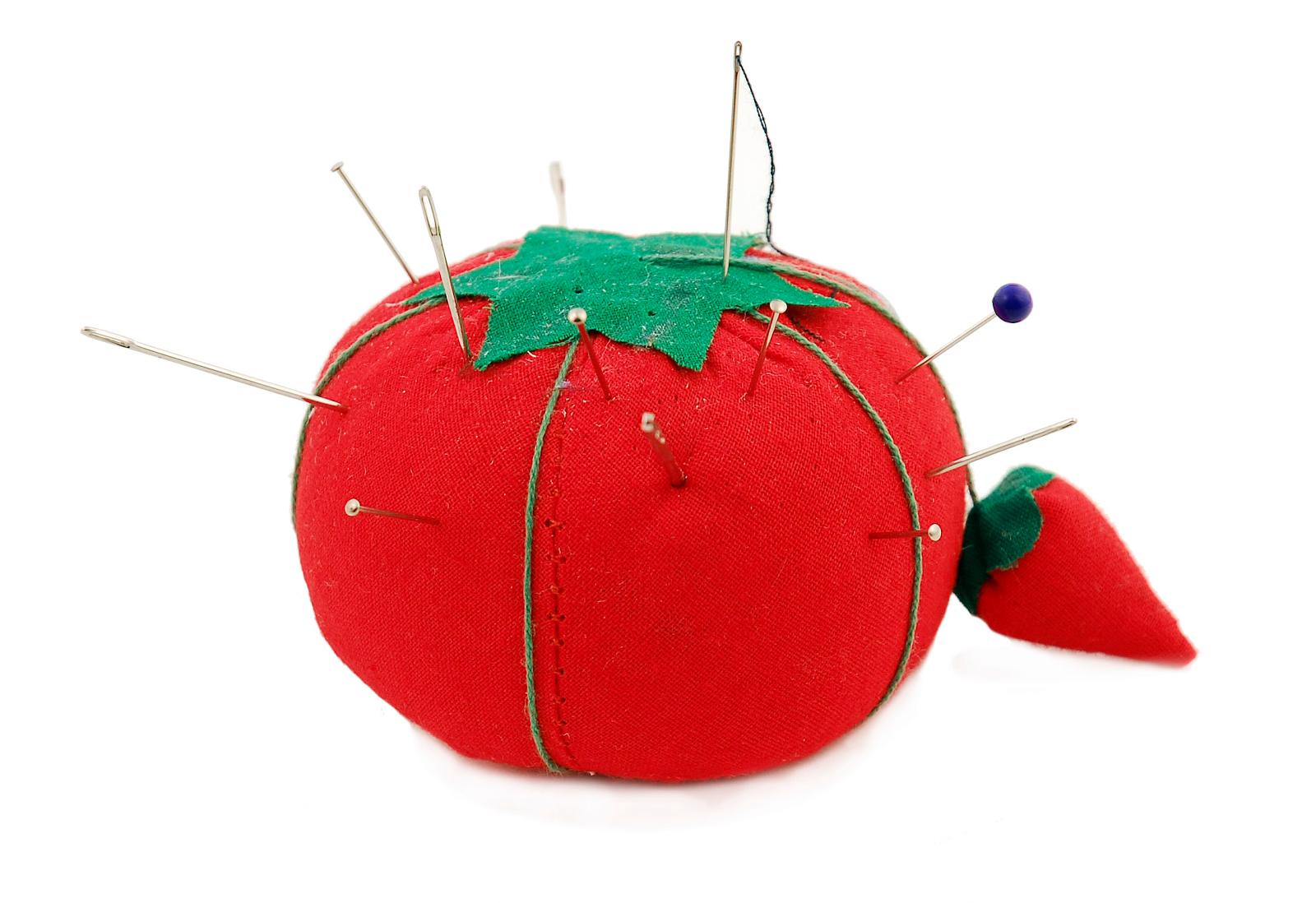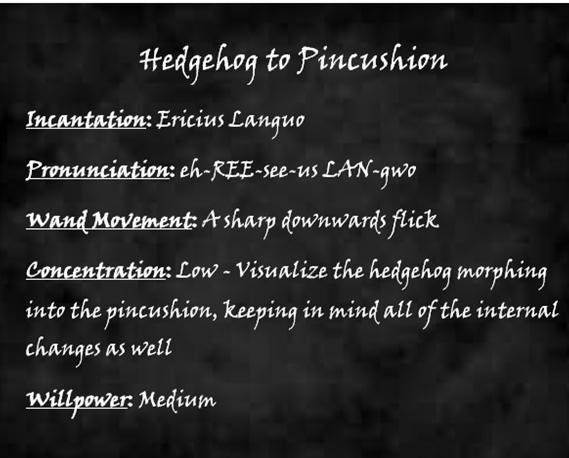Announcements
Welcome to Transfiguration!
11/25/22 - PA Applications will open January 1. Applicants should have completed all Year One assignments, including essays, and have at least an 85% in the course.
Please read the following before beginning this course or reaching out to Professor Mitchell or her PAs with questions.
1. If you have any questions about the course content, please reach out to any of the Transfiguration 201 Professor's Assistants. A list of current PAs can be found on the right side of this page. Please note that owls asking for the specific answers to quiz or essay questions will not be tolerated.
2. If you have submitted an assignment and are waiting for your grade to be returned, please do not reach out to the professor or PAs asking when it will be graded. Our grading team is composed entirely of volunteers and grading can occasionally take a little while due to both the number of assignments submitted and the real life commitments of our team. Please be patient.
3. If you believe your assignment has been graded in error, please reach out to either Professor Mitchell or Dane Lautner with the Grade ID (found in your Gradebook) for the assignment in question along with an explanation of what you believe is incorrect. Please ensure your message is respectful or your appeal will be denied.
4. If you have any comments or feedback about the course, please send an owl to Professor Mitchell.
Lesson 3) Hedgehogs and How to Get Them Back
Hedgehogs and How to Get Them back
Welcome
Professor Mitchell was shuffling papers around on her desk as the Second Years filed in. She was making sure she had everything she needed as there was quite a lot planned for the day’s lesson. On the chalkboard was written the word “Reparifarge.”
Introduction
Today’s lesson will include quite a bit of information as we will be covering two spells! As such, please be sure to try to pay attention throughout the entire lesson as this is important information that you will need throughout the rest of your transfigurative career. The first spell we are going to discuss is Reparifarge, an untransfiguration spell. Now, I know I said we were going to discuss untransfiguration in your Seventh Year, but considering the nature of the transfigurations we are performing this year, I believe it would be wise to teach this one to you now. So, without any further ado, let’s begin.
Reparifarge
Reparifarge is an untransfiguration spell that is used to revert a partially transformed object to its original state. We will be discussing the basic theory behind untransfiguration in your Seventh Year, but you shouldn’t need to know all the details in order to cast this spell. In general, the spell searches for the natural essence of the object in question and hones in on it in order to transform the object back into what it is meant to be. The result of this is that you do not need to know every detail of the original object in order to cast the spell, just have a general idea of what it was and what it looked like, so your concentration doesn’t need to be quite as strong. The nature of the spell directs some of your magic for you.
In terms of ethics, I, and many others, believe it is a necessity for all young transfigurists such as yourselves to know the Reparifarge spell, especially when dealing with live transformations. As you can imagine, it is not very comfortable for a creature to be stuck as half a cup and half a rat, but you will not always have someone more experienced around to fix these mistakes, so that responsibility falls to you. Though it is not the easiest spell you will learn during your time in this class, it is one of the most important. Just like anything else, it will take some practice to master, but the spell was designed to have little to no chance at backfire, so no matter what you should always attempt it when there is a need and no one more experienced around to help. On the very rare occasion that Reparifarge does backfire, your object would fully transfigure into the target object rather than the initial object and be stuck that way without any chance of untransfiguring. For example, if Reparifarge were to backfire on our half-cup-half-rat, our original rat would be stuck as a cup forever. Now, I realize that this may sound rather severe for a spell I just told you to always cast if there’s a need. However, the chance of this backfire is so low and the possible results of a living thing being stuck for an extended period of time are so severe that this risk is one that should almost always be taken. You must remember that there are risks and consequences that come with magic that you must consider every time you pick up your wand to cast a spell.

Hedgehog
Hedgehogs are small, nocturnal mammals of the order Eulipotyphla. They are omnivores and typically feed on insects, snails, bird eggs, berries, and melons, among other things. There are a total of 17 species of hedgehog, native to parts of Europe, Asia, and Africa.

In terms of appearance and important aspects in this transformation, hedgehogs are covered in spines that are actually hollow hairs that are rich in keratin, a fibrous structural protein that stiffens the hair. These spines do not easily fall out, only doing so during “quilling,” when they are replaced with adult spines, and when the creature is sick or under great stress. This is an important factor to note, but I’ll explain that a little more further on.
As mentioned last week, it is important to take a creature’s natural defenses into account when transfiguring them. One of the hedgehog’s main defenses is rolling up into a ball, forcing their spines outward to ward off a foe.
Pincushion
A pincushion is a small cushion with the purpose of holding pins and needles used for sewing. They originated in Europe in the Middle Ages and can be made in different colors and designs, the most popular of which is the tomato and strawberry design.
In order to rigidly hold the pins, the pincushion is tightly packed with various stuffing materials. It is important to remember this when performing today’s transformation as you must transform the inside of the hedgehog into that of the pincushion so that it may fulfill its purpose. Speaking of purpose, you will only be aiming for the pincushion today, devoid of any pins or needles. Therefore, though there is similarity in appearance between the hedgehog and a pincushion filled with pins, you must remember that, when just going for the cushion itself, the similarity lies solely in the purpose. It is also important to note that while a hedgehog’s spines are not meant to fall off easily, the pins placed into a pincushion should be easily removable.
The Transformation
With that, we can move onto the transformation! I have outlined the components of the spell below:

As discussed earlier, it is important to keep in mind all of the internal physical changes that need to occur during this transformation. Though we are not focusing on concentration as much this year, remembering this will help greatly for next year when we will be transfiguring objects into animate creatures, where concentration on internal changes is vital, similar to our Whistle to Watch transformation from last year.
As always, there’s some risk of backfire when performing this spell. A lack of willpower in this case can cause an incomplete muffling of the hedgehog’s consciousness. This is especially concerning considering the nature of our resulting object. If there is even a little bit of consciousness still present when one goes to use the transformed pincushion, the hedgehog will be able to feel the little prick and poke of every pin inserted. This pulls back in our ethics discussion. Before sticking any pins into your pincushion, you should be sure that the consciousness is completely muffled. Now, there is no way to determine this for certain, but you will normally be able to tell based upon how comfortable you are with the spell and how much you can feel the hedgehog’s will pushing back against your own when you cast it.
Where did this come from? Why do I care?
This spell was invented in 1782 by seamstress Holly Crimp (unrelated to seamstress Delfina Crimp who is said to have invented the Matchstick to Needle spell). She wanted to create a spell that would allow her to have a pincushion that her pet hedgehog wouldn’t keep chewing a hole in. Obviously the answer was to transfigure her beloved hedgehog as he couldn’t chew a hole through the pincushion if he was the pincushion.
Pincushions have been primarily used by seamstresses throughout history and as such, they were always the most common witches to be found using this spell. That has not changed into the present day and you still rarely find others performing this transformation as few find use for pincushions. Despite this, it is still an important spell to learn as it reinforces this idea of the unseen inside physical transformation and the thought of ethics.
Conclusion
I do hope you all enjoyed today’s lesson and will continue practicing both Reparifarge and the Hedgehog to Pincushion transformation. The former is especially important to know throughout the rest of the year. Take an assignment sheet on your way out and I will see you all next week!
*Hedgehog image credit: http://m.harunyahya.com/*
*Pincushion image credit: https://commons.wikimedia.org/wiki/File:Pincushion-Tomato.jpg*
- TNFG-101
Enroll
-
Uh-Oh
Essay -
On Pins and Needles
Quiz
-
Dane Lautner
Head Student
-
Claire Peters
Professor's Assistant
-
Evony Senoj
Professor's Assistant
-
Piper Clark
Professor's Assistant
-
Isobel Watford
Professor's Assistant
-
Maya
Professor's Assistant


